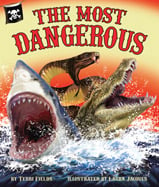Alignment to Standards for UT

| Grade | Number | Standard |
|---|---|---|
| 2 | CC-2.III.1c. | Create pictures and stories about real animals and compare them to make-believe stories about animals. |
| 2 | CC-2.III.4a. | Identify and use information on a map or globe (ie., map key or legend, compass rose, physical features, continents, oceans). |
| 2 | CC-2.III.4c. | Locate continents and oceans on a map or globe (ie., North America, Antarctica, Australia, Africa, Pacific Ocean, Atlantic Ocean). |
| 3 | SC-3.II | organisms depend on living and nonliving things within their environment. |
| 4 | SC-4.V.2c. | Describe some of the interactions between animals and plants of a given environment (e.g., woodpecker eats insects that live on trees of a forest, brine shrimp of the Great Salt Lake eat algae and birds feed on brine shrimp). |
| 4 | SS-4.II.3b. | Describe the role of producers and consumers. |
| 5 | SC-5.V.1d. | Contrast inherited traits with traits and behaviors that are not inherited but may be learned or induced by environmental factors (e.g., cat purring to cat meowing to be let out of the house; the round shape of a willow is inherited, while leaning away fr |
| 5 | SC-5.V.2c. | a particular physical attribute may provide an advantage for survival in one environment but not in another (e.g., heavy fur in arctic climates keep animals warm whereas in hot desert climates it would cause overheating; flippers on such anim |
| K | CC-K.III.2e. | Distinguish between real and make-believe animal behaviors. |
| K | CC-K.III.3a. | Recognize that maps and globes are symbols for actual places. |
| K | CC-K.III.3c. | Explore basic map and globe directions and characteristics (e.g., top, bottom, right, left, land, water, Arctic Ocean, Antarctica). |